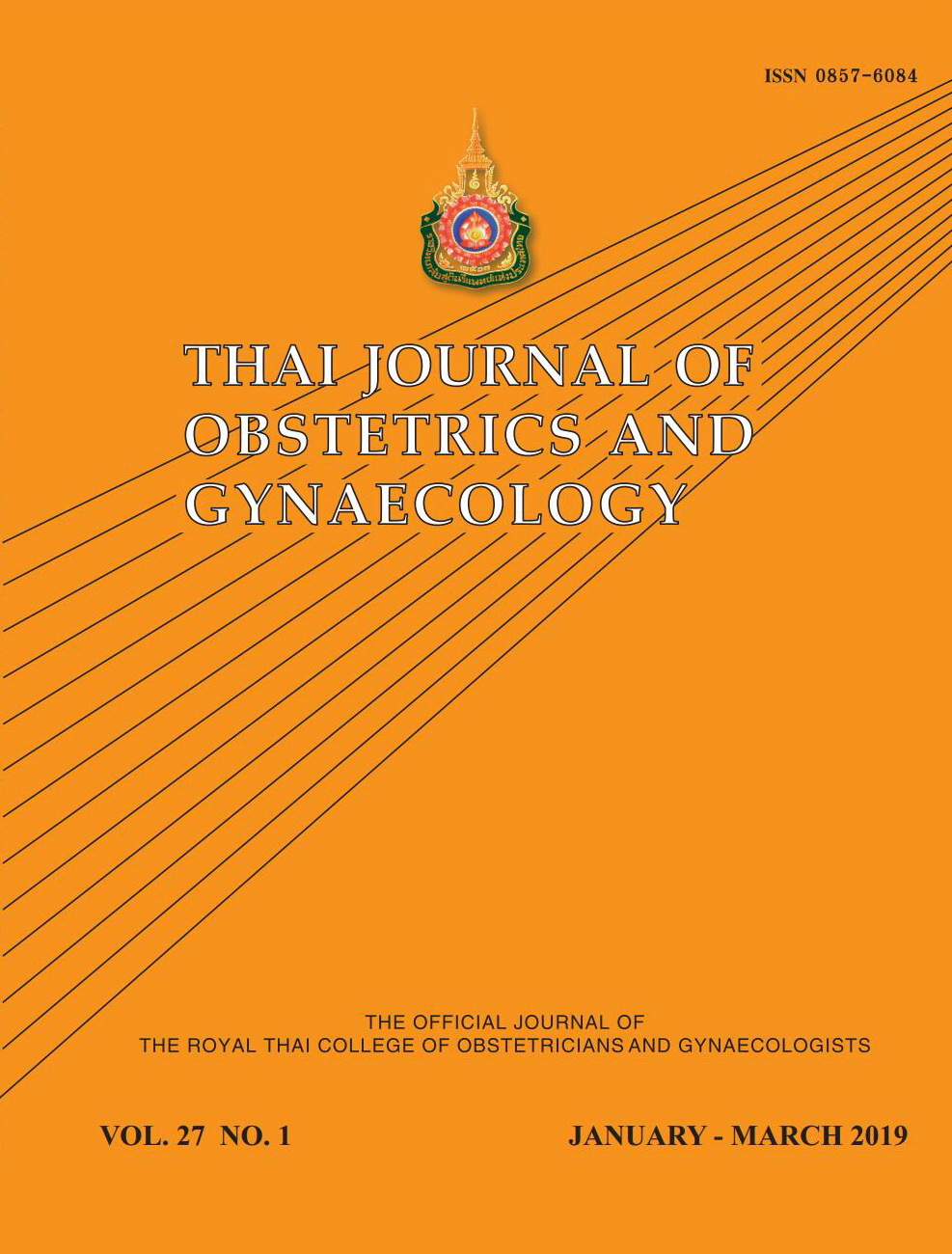Percentage of Pregnant Women Reading the Maternal and Child Health Handbook and Associated Factors at Srinagarind Hospital
Main Article Content
Abstract
Objectives: To evaluate the percentage of pregnant women who read the maternal and child health handbook (MCHH) at Srinagarind hospital, associated factors, attitudes toward the MCHH and to compare maternal knowledge between handbook readers and non-readers.
Materials and Methods: This was a cross-sectional study conducted from September 2016 to March 2017. All primigravida pregnant women who had been given the MCHH at least for one month previously were included. A questionnaire-based interview was conducted for evaluating the percentage of participants who read the MCHH and associated factors. “Read” meant the participants had read more than 50% of the MCHH’s contents and at least four of the eight topics.
Results: Out of 317 pregnant women, 206 (65%) read the MCHH. The most read item was dietary recommendations (78.2 %). The two least read items were iodine deficiency disease and prevention of mother to child transmission of HIV (49.5 %). The participants who read the MCHH were 2.5 times more likely to pass the exam than who did not. The most influential factor affected the reading of the MCHH was “reading prior current pregnancy”. The top two reasons for not reading the MCHH were choosing to receive the information from other sources and the style of the handbook not being attractive.
Conclusion: The percentage of participants who read the MCHH in Srinagarind Hospital was 65%. The factor that affected the reading of the MCHH was “reading prior current pregnancy”. Moreover, women who read the MCHH had a more knowledge about pregnancy compared with those who did not.
Article Details
References
2. Aihara Y, Isaranurug S, Nanthamongkolchai S, Voramongkol N. Effect of maternal and child health handbook on maternal and child health promoting belief and action. Journal of International Health 2006;21:123–7.
3. Yanagisawa S, Soyano A, Igarashi H, Ura M, Nakamura Y. Effect of a maternal and child health handbook on maternal knowledge and behavior: a community-based controlled trial in rural Cambodia. Health Policy Plan 2015;30:1184–92.
4. Hagiwara A, Ueyama M, Ramlawi A, Sawada Y. Is the Maternal and Child Health (MCH) handbook effective in improving health-related behavior? Evidence from Palestine. J Public Health Policy 2013;34:31–45.
5. Agrina, Suyanto, Arneliwati. The effect of reading maternal and child health’s handbook campaign at Posyandu (Child health post) in Pekanbaru, Indonesia. MJN 2016;7:27–33.
6. Kawakatsu Y, Sugishita T, Oruenjo K, Wakhule S, Kibosia K, Were E, et al. Effectiveness of and factors related to possession of a mother and child health handbook: an analysis using propensity score matching. Health Educ Res 2015;30:935–46.
7. Mori R, Yonemoto N, Noma H, Ochirbat T, Barber E, Soyolgerel G, et al. The Maternal and Child Health (MCH) Handbook in Mongolia: A cluster-randomized, controlled trial. PLoS One 2015;10:e0119772.
8. Osaki K, Kosen S, Indriasih E, Pritasari K, Hattori T. Factors affecting the utilization of maternal, newborn, and child health services in Indonesia: the role of the Maternal and Child Health Handbook. Public Health 2015;129:582–6.

